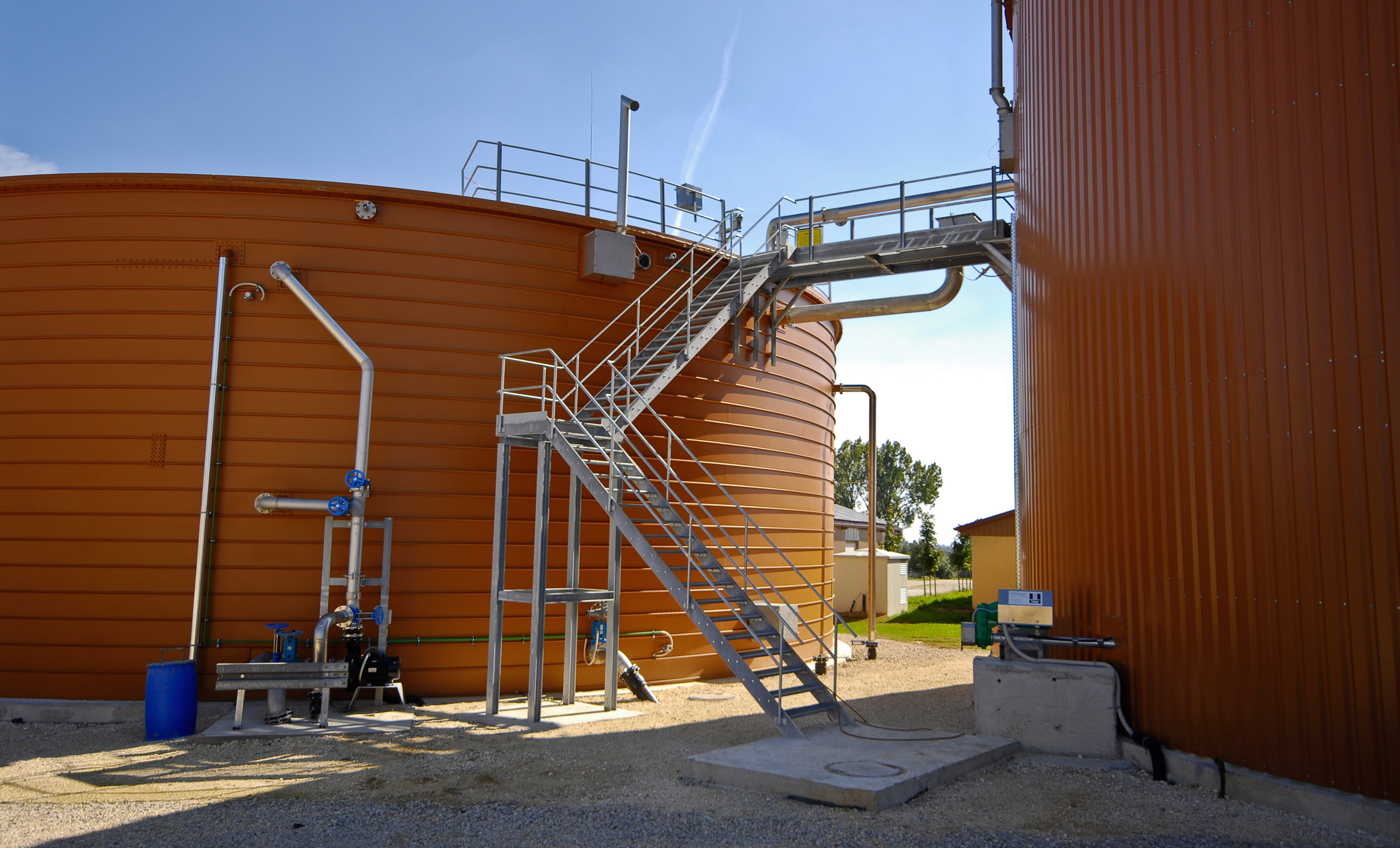
Having introduced the Lipp tank system for anaerobic digesters to the UK, installation expert BCI Process went to check on a new install at a family run farm in Tannhausen, Germany, to make sure we are not missing a trick on the latest Biogas power generation equipment and techniques.
The Tannhausen farm is a mixed enterprise with both arable and livestock production, the system was designed to match the substrates produced by the farm.
The main digester tank in a farm system from BCI can be built to the specific requirements of the client, with a diameter anywhere between 3m and up to 40m.
The digester and other storage tanks are built from “Verinox”, a special combination of stainless steel interior and galvanised steel exterior, which has been developed and patented by Lipp.
Andrew Shedden, European Sales & Marketing Manager at BCI Process comments, 'There is a lot of innovative design, materials and technology used to create these tanks so we wanted to make sure the UK systems were being constructed in exactly the same way and giving the same yield figures as the German installs.'
The first step was to create a detailed layout of the entire plant based on the client's criteria.
This design advocated the single stage digestion process, which allowed for a shorter dwell time for the feedstock in the digester.
The smooth stainless steel interior of the tank is a major advantage over traditional concrete designs, making agitation much easier as well as avoiding any build up of material on the tank walls.
The project began with the foundations being laid down, and then the equipment required for creating the tanks is installed on and around the foundations. The creation of the tank is by a unique process, which requires very few nuts and bolts and much less time than a traditional storage tank.
The "Verinox" material arrives on site as a large roll of sheet metal, less than a meter across. This is fed into a series of rolling machines positioned around where the base of the tank will be.
The rollers start to form the tank by folding the lower edge to a certain profile, then, as the leading edge completes the first lap, the lower edge is folded together with the top edge of the next layer. This creates the first ‘ring’ and as the tank is rotated by the rollers so more rings are added and tank grows.
The two edges are folded together with a sealant in such a way that a gas-tight seal is produced as well as a smooth internal surface. The external fold forms the structural strength of the tank, allowing it to be self-supporting.
Once the tank reaches about 2m in height, the top ring is cut level and the roof is installed. At the same time a gas hood can be installed in the digester to capture the biogas before it is piped away to be burnt or stored. As the tank continues to gain height, any pipes or valves that are required can be installed from ground level rather than using access equipment, which would be the case in a conventional tank build.
In addition, the thickness of the tank walls can be adjusted during the construction process, providing, for example, 1.5mm in the top section with 3mm in the bottom sections. This means that the material costs are minimised while the tank strength is maintained.
In this project the design called for wall heating to be installed, which could also be done as the tank was formed. The hose drums were set up next to the tank and as it rotated so the hose was pulled off the drums and could be fixed to the external tank wall, again all done from ground level.
Once the design height has been reached, the bottom edge of the tank is cut level and the rollers are reversed, which lowers the finished tank into position on the foundations, where the ground fixings are installed. This allows the insulation and exterior cladding to be installed along with the pipe work, valves, pumps and agitators.
The whole project was completed on time and on budget, with the completed plant capable of producing 570KWh of electricity, sufficient for 80 households. ‘This is within the target yield of our installs, although the feed-in materials, temperature and process decisions also all play a large part in maximising the end result.'
We have to select between a single or two phase digestion process for example, single phase is typically faster, but higher temperature, so it is really about matching the install with the available materials, volumes and space available.'
This is just one of over 3,000 Lipp tanks which have been installed worldwide as far apart as Japan and Central America, a high proportion of which are farming related applications forming part of anaerobic digestion plant for local renewable power generation.
Andy Shedden is responsible for introducing the system to the mainstream UK market, ‘We have been installing food and waste grade pipework, vessels and tanks for over 30 years and the first time we saw one of these containers being erected over in Germany we just knew we had to supply it in the UK. The tanks are fast to put-up and light-years ahead of some traditional panel designs in terms of integrity and longevity.’
